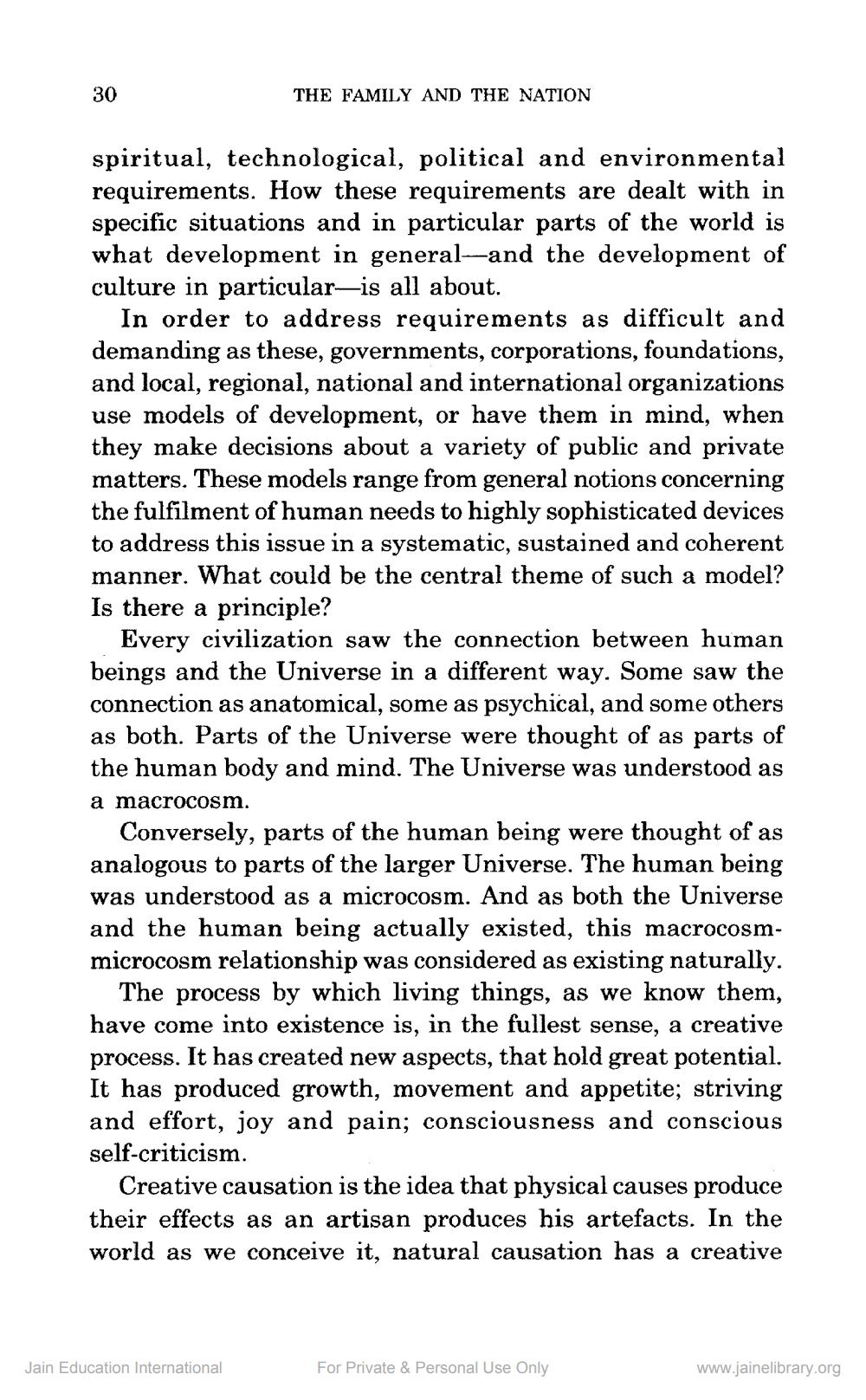________________
20
THE FAMILY AND THE NATION
spiritual, technological, political and environmental requirements. How these requirements are dealt with in specific situations and in particular parts of the world is what development in general-and the development of culture in particular—is all about.
In order to address requirements as difficult and demanding as these, governments, corporations, foundations, and local, regional, national and international organizations use models of development, or have them in mind, when they make decisions about a variety of public and private matters. These models range from general notions concerning the fulfilment of human needs to highly sophisticated devices to address this issue in a systematic, sustained and coherent manner. What could be the central theme of such a model? Is there a principle?
Every civilization saw the connection between human beings and the Universe in a different way. Some saw the connection as anatomical, some as psychical, and some others as both. Parts of the Universe were thought of as parts of the human body and mind. The Universe was understood as a macrocosm.
Conversely, parts of the human being were thought of as analogous to parts of the larger Universe. The human being was understood as a microcosm. And as both the Universe and the human being actually existed, this macrocosmmicrocosm relationship was considered as existing naturally.
The process by which living things, as we know them, have come into existence is, in the fullest sense, a creative process. It has created new aspects, that hold great potential. It has produced growth, movement and appetite; striving and effort, joy and pain; consciousness and conscious self-criticism.
Creative causation is the idea that physical causes produce their effects as an artisan produces his artefacts. In the world as we conceive it, natural causation has a creative
Jain Education International
For Private & Personal Use Only
www.jainelibrary.org




